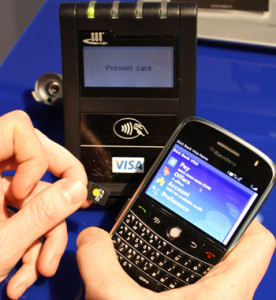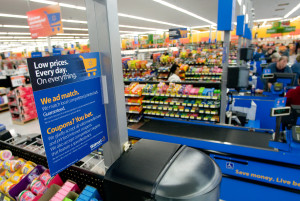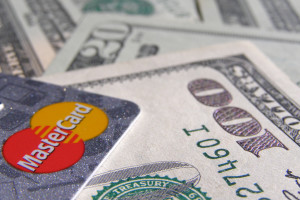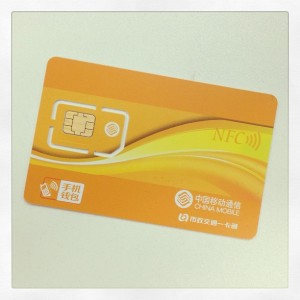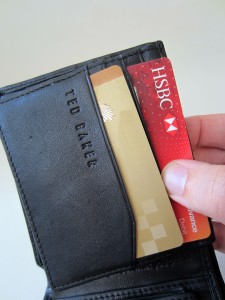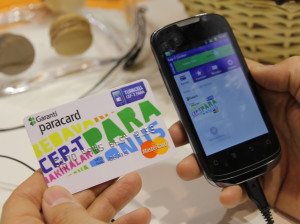Category: Gift & Loyalty Card Processing
April 15th, 2014 by Elma Jane
Amsterdam, Netherlands-based Cardis has been piloting its technology in Europe with Raiffeisen Bank in Austria and Sberbank in Russia. They are now focused on the U.S., as this is the fastest growing mobile payments market in the world, where there’s a huge opportunity. Integration of technology with a large U.S. processor and with a major U.S. retail brand, which will be launching a mobile site and mobile app using Cardis solution.
Cardis International is planning an April launch in the U.S. for its technology, which enables merchants to accept low-value contactless or mobile payments without incurring high processing charges. Cardis is able to bring down the processing cost of low-value payments, the company said, by aggregating multiple transactions into a single payment.
The problem
Contactless card and NFC-based mobile payments are typically for low amounts, and yet still use a card processing infrastructure that was designed 40 years ago when the average credit card transaction was $100.
Traditional card processing systems require each transaction to be individually processed through the payment system, including authorization, clearing and settlement. The resulting variable costs of processing each transaction are independent of the transaction amount and too high for low-value payments, particularly in low-margin industries such as quick-service restaurants. QSR restaurants often have a 3 percent profit margin, yet, for low-value contactless payments, the processing cost could be as high as 6-7 percent of the transaction value.
Mobile and contactless cards offer consumers a convenient form factor. But they don’t solve the problem that low-value card payments are very expensive for merchants.
As an ever-increasing percentage of transactions have become cashless, card processing fees have become a significant cost. Costs that are based on the number of transactions, rather than their value. With average per person expenditures of $5 or under, feels each swipe fee much more than a business where customers spend $50 or more. But not accepting credit/debit cards for low-value transactions isn’t an option as many of customers don’t carry cash anymore.
Aggregation
Cardis’ solution is to act as an aggregator of low-value payments, sending a single batched transaction through to a processor instead of multiple low-value transactions. As there is no per transaction processing of individual low-value purchases, the cost-per-transaction is significantly reduced.
Cardis provides its technology as a software plug-in to payment service providers for contact-based and contactless card payments, mobile wallet transactions and NFC payments.
There are two models. For card payments, it will aggregate multiple purchases by an individual cardholder at a single merchant on a post-paid basis up to a specific amount, for example $20. To guarantee payment to the merchant, since the aggregated transaction is processed at a later date, it will pre-authorize an amount, for example $15, the first time the customer makes a purchase at that merchant.
Alternatively, merchants can opt for Cardis’ prepaid system. This involves the consumer setting up a prepaid account hosted by Cardis’ sponsoring bank that is topped up via ACH (automated clearing house) transfers. Using the Cardis prepaid account on a smartphone provides the digital equivalent to cash.
With its post-paid solution, merchants will save 30-50 percent per transaction compared to conventional card processing fees, while its prepaid solution saves merchants 80 percent per transaction. With the post-paid solution, it will only aggregate a customer’s purchases at a single specific merchant. But, as the prepaid solution aggregates the customer’s purchases across multiple merchants, this enables to offer a much lower processing fee to the merchant.
Cardis provides an audit trail enabling consumers to track individual transactions that are aggregated using its technology. Consumers don’t lose any of their card protection rights and guarantees by agreeing to let a merchant aggregate their payments through Cardis. They can always charge back any disputed transactions.
Cardis sees opportunities for digital content providers such as online music stores and games providers to use its aggregation technology. It can integrate solution with existing digital wallets.
Raiffeisen
In 2012, Austria’s Raiffeisen Bank launched a pilot of Cardis technology for NFC-based Visa V Pay debit card payments in partnership with Visa Europe. Raiffeisen’s MobileCard mobile payment product uses a secure element stored on an NFC-enabled MicroSD card inserted in a mobile phone. Although Cardis supports secure elements stored on SIM cards as well as on MicroSD cards and on the cloud, Raiffeisen opted for MicroSD cards, as this is an easier solution to implement.
Raiffeisen cardholders participating in the pilot use MobileCard on average three times a week, with an average transaction value of ($5.70). Merchants accepting MobileCard are seeing 40 percent to 70 percent lower merchant processing fees for an average transaction value of ($5.43) to ($13.60).
Spindle
In October 2013, Spindle, a U.S. mobile commerce company, signed an agreement with Multi-max, a manufacturer of vending machines for mid-size and small offices throughout North America, Europe and Asia. Spindle will integrate its MeNetwork mobile commerce technology into Multi-max’s line of K-Cup vending machines for rollout across the U.S.
The MeNetwork solution will incorporate all card-based payment acceptance services, as well as mobile marketing services. Spindle’s partner Cardis will provide low-value payment processing services for purchases at K-Cup vending machines.
Posted in Credit card Processing, Credit Card Security, Digital Wallet Privacy, e-commerce & m-commerce, Electronic Payments, Gift & Loyalty Card Processing, Internet Payment Gateway, Mobile Payments, Mobile Point of Sale, Near Field Communication, Payment Card Industry PCI Security, Smartphone, smartSD Cards, Visa MasterCard American Express Tagged with: accept, ach, aggregated, aggregation, aggregator, authorization, automated clearing house, average transaction, batched, card payments, card processing infrastructure, card processing systems, card-based payment acceptance, cardholders, clearing, contactless, contactless payments, cost-per-transaction, credit card transaction, debit card payments, Digital wallets, high processing charges, low-value payments, merchant aggregate, Merchant's, microSD, mobile app, mobile commerce, mobile payment, Mobile Payments, mobile site, mobile wallet transactions, nfc-based, payment service providers, pre-authorize, prepaid, processed, Processing, processing cost, processing fees, processor, settlement, smartphone, transactions, transfers
April 11th, 2014 by Elma Jane
Of the 17 percent of consumers who reported having had their credit card declined during a card-not-present (CNP) transactions. As many as one-third of those declines were unnecessary. The result is consumer aggravation, increased operational costs for banks and credit card companies and as much as $40 billion in lost revenue for online retailers.
TrustInsight which helps establish trusted relationships between financial institutions, merchants and online consumers conducted study. A report and infographic detailing the findings of the study found that avoidable online credit card declines lead to loss of trust for consumers, sales for merchants and increased operational costs for credit card companies and issuing banks.
Study also revealed that consumers handle credit card declines in a variety of ways all of which carried negative economic impact to at least one party in the transaction, resulting in unnecessary operating costs for banks, decreased loyalty for the credit card company and lost revenue for all. Almost half call their issuer immediately when their card is unexpectedly declined. This is a natural response. 34 percent of consumers try again another credit card, other use a different payment method and 24 percent will skip the purchase altogether or shop at a different online retailer.
No one wants to turn away business, and no one wants their business declined. The frustration and impact of wrongful declines is a real problem especially as more and more transactions occur in non-face-to-face situations.
Impact of consumer action in the face of a decline can have real and measurable effects on all parties, including credit card companies, banks and merchants manifesting itself in lost customer loyalty, lost fees and lost revenues. Creating a standard for online trust that enables credit card companies, merchants and issuing banks to better recognize trusted digital consumers and reduce the number of wrongly declined consumers avoiding unnecessary losses.
In a world where people are increasingly reliant on a variety of Internet-connected devices for everything from banking to shopping to entertainment and media, creating friction-free customer experiences and preventing online fraud are constant business challenges.
Posted in Best Practices for Merchants, Credit card Processing, Credit Card Security, Electronic Payments, Financial Services, Gift & Loyalty Card Processing, Merchant Services Account, Small Business Improvement, Visa MasterCard American Express Tagged with: banking, consumers, credit-card, decline, declined, declines, different payment method, digital, digital consumers, financial, frustrate, internet-connected devices, issuing banks, loyalty, Merchant's, online credit card declines, online fraud, online retailers, shopping, transactions, wrongful declines, wrongly declined
March 3rd, 2014 by Elma Jane
Interchange is a word that’s talked about a lot in the payments industry. If you didn’t have to pay interchange fees, what would your business spend the money on? At its most basic, interchange is the fees businesses pay to credit card processors to swipe your credit and get paid – or the cost of moving money. Businesses are sick and tired of paying high fees and getting very little in return. Customers are sick and tired of seeing prices of items tick upwards as businesses are forced to charge more to cover the cost of interchange.
Businesses spend an exorbitant amount of money each year to accept credit cards – to the tune of $50B. Businesses could reinvest the money they’ve been spending on interchange to better connect with customers, enhance marketing initiatives and grow faster and smarter. Just imagine for a second the economic stimulus the country would get if all that money was put back into the business to drive growth, or back into the pockets of customers to lower costs.
In the past 30 years, interchange fees have mainly gone in only one direction: up. Luckily, things are starting to change, and I think we’re going to start seeing interchange being driven down. The days of a 3 -or 4-percent interchange rate are beginning to look numbered and here’s why:
Competition
There are nearly 200 players in the mobile payments space, with more entering daily. New opportunities are providing businesses with alternative payment options that are outside of Mastercard and Visa’s clutches. While there might be 1,000-plus credit card processing companies, they’re all based on the Mastercard/Visa rails, which provides a fixed floor. But not so with many of these new payment options. As such, traditional methods of payment (cash, credit cards) are facing an increasing amount of competition, and merchants are starting to pay attention.
It’s unlikely that cash and credit cards are going away anytime soon, but it only takes a small shift in volume (maybe 5 percent) for the card issuers to start paying attention. There are a number of ways for them to react, but if history is any guide, one of them will be to start lowering their prices. Alternatively, they could find ways to offer more value to their merchants. Either way, competition is offering merchants new ways to accept payments, and this will lower fees over time.
Innovation
The second thing driving down costs for merchants is rapid innovation, and like a good deal of innovation these days, much of it is centered around mobile. Mobile payments are starting to gain significant traction among consumers, accounting for $640M in 2012 and expected to have grown by an additional 234 percent in 2013.
QR codes, NFC, peer-to-peer payments, card emulation – the list of new technologies trying to disrupt the payments space goes on and on. These new alternatives are challenging the current payments system and shedding light on the opportunities for businesses. This innovation is beneficial in two ways. The first, as discussed above is that more competition will naturally drive costs down. The second is that alternative payment options are focusing on value beyond the transaction.
There are new payment options out there that provide tangible information, such as data analytics, which help companies drive sales and increase revenues. New options are allowing small businesses access to the same technology and analytics that were previously reserved for big-box retailers or e-commerce sites only. These additional value propositions not only help businesses, they also provide new ways for payments companies to monetize, removing the need for them to make all of their money from interchange. With two (or more) revenue lines, lowering interchange is suddenly a lot more feasible.
Legislation
The Durbin Amendment is designed to introduce competition in the debit card processing network and limit fees for businesses. For all of its unintended consequences, Durbin legislation is actually helping to drive down interchange; it’s opening up competition for non-card-brand network players and lowering debit card fees. While it is certainly rife with controversy, this amendment is opening up new ways to move money that will, over time, contribute to a less expensive payment processing ecosystem.
Merchant demand
Business owners are smart and savvy. They pay attention to trends, focusing on finding new ways to set their business apart. Business owners are also conscious of ROI, and how much they’re spending to attract and retain customers. They understand there is some cost to accept payments, but are becoming more and more frustrated at the high swipe fee costs from traditional credit card processors and minimal return for those fees.
Businesses are looking to new, innovative solutions to provide more than just payment processing – they want to understand and better connect with their customers. In short, merchants are ready for a new payments ecosystem, and where there’s this much demand from a group this big and influential, a solution can’t stay away for too long.
Interchange rates are not going away entirely in the near future, although it will happen eventually. A lot of powerful wheels are in motion to significantly reduce the interchange rates that merchants currently pay. Right now the impact might be small, but it’s growing quickly. In a few years, 3- to 4-percent interchange could be relegated to the same bit of history as $1.99 international phone calls.
Posted in Credit card Processing, Electronic Payments, Financial Services, Gift & Loyalty Card Processing, Internet Payment Gateway, Small Business Improvement Tagged with: accept credit cards, accept payments, alternative payment, credit card processing, credit card processors, credit cards, debit card processing network, e-commerce, interchange, interchange fees, interchange rates, lowering debit card fees, lowering interchange, Merchant's, Mobile Payments, payment processing, payments, payments industry, swipe your credit card
January 29th, 2014 by Elma Jane
More than 60 percent of online shoppers returned or exchanged at least one item. About 95 percent of customers will go back to an online merchant and make additional purchases after a positive return or exchange experience, making managing the process important for e-commerce success.
Exchanges and returns will shortly be a hot topic for online retailers as Christmas gift recipients contact sellers in the wake of an exceptional holiday selling season. These Christmas gift recipients will want to exchange and return unwanted gifts, items that are wrong size, or even items that may have been damaged in transit.
Returns and exchanges are important for building long term customer relationships, with some 95 percent of shoppers going back to online merchants that have offered a good exchange or return experience in the past, according to data from Endicia, an electronic postage solution provider. Conversely, about 85 percent of consumers will not return to an online shop after a poor return or exchange experience, again according to Endicia.
What follows are tips for offering a better exchange or return experience for online shoppers.
Create an Opportunity
Returns and exchanges are also an opportunity to make additional sales. As mentioned above, about 95 percent of shoppers will return to an online store and make an additional purchase after a positive return or exchange experience.
Similarly, about 45 percent of shoppers will actually recommend an ecommerce merchant, again according to Endicia, after a positive return experience, meaning that taking care of an existing customers could lead to new customers too.
Consider sending each shopper who returns or exchanges an item a follow-up email, asking for feedback about the experience. Identify ways to improve the return process, and business in general will improve too.
Know the Cost of Returning
A guitarist for a popular party and event band recently ordered a new guitar strap from a merchant on the Amazon marketplace. Unfortunately, there was an error in the shipment, and the merchant apparently sent a shorter strap than expected. When this guitarist contacted the seller about an exchange, he was told that a new strap would be shipped that day and that he could simply keep the smaller strap.
This solution was great for the customer, who did not have to repackage the strap or arrange for a carrier to pick it up. He was generally happy with the experience. This was probably also better for the merchant, who might have simply been able to order a new guitar strap from its distributor for about the same cost has having the strap returned.
To make this sort of business decision, it is important to understand the real cost of managing a customer return, including the cost of the shipping and the labor necessary for processing the return once it arrives back at the seller’s warehouse. If it cost as much or nearly as much to return the item as it would to simply purchase another one wholesale, consider letting the customer just keep it, saving everyone involved time and expense.
Provide Return Instructions or a Return Label in Every Order
Shoppers don’t want to wait for return labels. In fact, about 62 percent of online shoppers want a return label included in the initial shipment, according to Endicia. Including a return label is not difficult, and many online sellers may find that the ability to do so is either built directly into the retailer’s ecommerce platform or is available via an extension to the ecommerce platform.
A second option may be to offer shoppers a simple, self-service way to print a return label from your site. This self-service option does not require the customer to contact the shipper to get authorization or wait for an emailed label. According to the Endicia data, about 61 percent of shoppers will be happy with an easy way to print return or exchange labels.
State Return and Exchange Policies Clearly
Let customers know exactly what to expect from the return and exchange process. Post clear, simple-to-understand policies on a page of the site specifically designated for returns or shipping policies.
Posted in Best Practices for Merchants, Credit card Processing, e-commerce & m-commerce, Electronic Payments, Gift & Loyalty Card Processing, Internet Payment Gateway, Visa MasterCard American Express Tagged with: Amazon, ecommerce, gift recipients, marketplace, online merchant, online retailers, online sellers, online shoppers, return or exchange, returns and exchanges, self-service
December 30th, 2013 by Elma Jane
MasterCard and Green Dot today announced an expanded relationship that allows all U.S. cardholders with MasterCard rePower -enabled prepaid cards to reload their cards via the Walmart Rapid Reload service.
Walmart Rapid Reload utilizes the Green Dot Network to provide cardholders with a fast and easy way to load funds directly to their cards by swiping their cards at any register at participating Walmart stores (not available in VT or WY). Cardholders can add funds directly to their prepaid account by using cash or a pre-printed payroll or government check. Cashier-added funds will be available for use by MasterCard rePower-enabled cardholders within minutes.
The MasterCard rePower network is open to any MasterCard issuer of reloadable prepaid card programs. Portfolios such as the Univision MasterCard Prepaid Card will be able to offer their cardholders the new cash reload option through Walmart Rapid Reload.
Prepaid products provide consumers with choices in how they manage and spend their money. In order to maximize the potential of prepaid, cardholders need to be able to conveniently and securely reload funds. Our expanded partnership with Green Dot now allows our cardholders to load funds to their prepaid cards at more than 4,000 Walmart stores that offer Walmart’s Rapid Reload service, said MasterCard Group Executive of U.S. Market Development Craig Vosburg.
Posted in Credit card Processing, Electronic Payments, Gift & Loyalty Card Processing, Visa MasterCard American Express Tagged with: cardholders, green dot, MasterCard, network, pre-printed, prepaid cards, rapid reload, register, reloadable, repower, securely, Swiping, univision, walmart
December 16th, 2013 by Elma Jane
1. Account Updater (Visa)
Incorrect billing information leads to declined credit cards, loss of sales and unhappy customers.
Visa touts its Account Updater as an easier way to keep customer data current. The tool appends all card data with up-to-date customer info so businesses can avoid difficulties over address changes, name changes, expired cards and more.
The tool can benefit any business that bills customers on a recurring basis.
It eliminates the need for manual administration, so it can lower your business’s operational costs and customer-service expenses. And by saving your clients the hassle of a declined payment, you can boost customer satisfaction and overall sales.
2. Netswipe
Paying online is convenient for customers, but keying in an unwieldy credit card number is still a pain.
Netswipe from Jumio gives customers an easier way: The tool lets users pay by snapping a photo of their credit card; it’s almost as easy as swiping your card through a traditional card reader.
According to Jumio, customers can use their smartphone or tablet to scan a card in as little as 5 seconds, whereas traditional key entry takes 60 seconds or more, on average. Having a quick and convenient way to pay could help contribute to a positive buying experience and encourage repeat business.
The system is compatible with any iOS or Android mobile device, as well as with any computer with a webcam.
3. Netverify
Jumio’s fraud-scrubbing tool helps you determine if your customers are who they say they are.
Net verify allows customers to snap a picture of their driver’s license or other identification using a smartphone, tablet or PC webcam. Once the image is taken, the tool can verify the authenticity of the documentation in as little as 60 seconds.
That’s much faster and more convenient than asking a customer to fax or mail a copy of their ID in the middle of a transaction.
The tool can verify identifying documents from more than 60 countries…including passports, ID cards and driver’s licenses, and even bank statements and utility bills. Jumio says its software is smart enough to automatically reject nonauthentic documents.
And customers can rest easy knowing that all submitted information is protected with 256-bit encryption to prevent identity theft.
Online merchants embed Netverify into their websites as part of the checkout process.
4. Payment Gateway
Payment Gateway service does all the heavy lifting of routing and managing credit card transactions online.
Portals like this one benefit small businesses by providing a fast and secure transmission of credit card data between your website and the major payment networks. It works a lot like a traditional credit card reader, but uses the Internet to process transactions instead of a phone line.
Payment Gateway also offers built-in fraud-prevention tools and supports a range of payment options, including all major credit cards and debit cards.
5. PayPal Here
Mobile credit card processing services like PayPal Here make it easy to accept credit cards in person using a smartphone or tablet.
PayPal Here and other similar services send you a dongle that attaches directly to your iPhone, iPad or Android device, allowing you to swipe physical credit cards wherever you are.
One major benefit of mobile credit card readers is that they work with the devices you already own. That means there’s no need to carry around additional hardware, aside from the reader add-on itself. Most credit card readers attach to your device via the headphone jack or charger port, and are small enough to fit in your pocket.
The smallest businesses have the most to gain by opting for mobile credit card readers, which are cheaper and far more portable than traditional options.
6. Virtual Terminal
If you do business online, your website needs the infrastructure to accept credit card information.
Web-based applications like virtual terminal offer the basic processing functionality of a physical point-of-sale system, and are easy to install on your business’s website.
The system allows merchants to collect orders straight from the Web, or take orders via phone or mail and before initiating card authorizations online.
It also includes extensive transaction history to help you manage payment data, split shipments, back orders and reversals. Business owners can even receive a daily email report of all credit card transaction activity from the prior day.
Posted in Best Practices for Merchants, Credit card Processing, Credit Card Reader Terminal, Credit Card Security, e-commerce & m-commerce, Electronic Payments, EMV EuroPay MasterCard Visa, Gift & Loyalty Card Processing, Mail Order Telephone Order, Merchant Cash Advance, Merchant Services Account, Mobile Payments, Mobile Point of Sale, Near Field Communication, Point of Sale, Smartphone, Visa MasterCard American Express Tagged with: account, Android, authenticity, card data, card reader, checkout, checkout process, credit card number, credit card transactions, debit cards, declined payment, expired, fraud, id, iOS, mail, mobile device, nonauthentic, online, online merchants, passports, payment data, payment gateway, payment options, phone, point of sale, recurring, smartphone, tablet, verify, visa, webcam
December 12th, 2013 by Elma Jane
The Consumer Financial Protection Bureau is reviewing whether credit card rewards program are misleading to credit card users.
Results of the review may be new. Strict rules about the transparency of rewards programs, including details about cash back offers, mileage awards and how these rewards must be redeemed.
In an email to Bloomberg News, CFPB Director Richard Cordray said, we will be reviewing whether rewards disclosures are being made in a clear and transparent manner, and we will consider whether additional protections are needed.
Credit card issuers like American Express, Bank of America, Chase, Citi and Discover rely on rewards programs to attract new customers as well as increasing the use of their cards by existing cardholders. Rewards are the No. 1 reason why customers select the card, and there’s almost a battle to provide the highest rewards.
What we’ve learned over time is, our best customers value rewards. Their spend behaviour changes based on rewards, said Edward Gilligan, the President of American Express.
The CFPB’s restrictions could put a damper on each company’s ability to draw in new cardholders.
While there are no apparently abuse issues with rewards programs at this time, the CFPB is taking the initiative to catch a problem before it happens.
Keep an eye out for notices from your credit card issuer about changes in your rewards program. Changes, or at least clarifications, could come as a result of this examination.
Posted in Gift & Loyalty Card Processing, Visa MasterCard American Express Tagged with: American Express, Bank of America, cardholders, Chase, Citi, consumer, credit-card, Discover, financial, issuer, protection, rewards
November 22nd, 2013 by Admin
As we move to smartphones and tablets as payment methods security and privacy concerns are a real issue. With recent NSA leaks shedding light on our data and the access others have to it, we have to consider security, privacy and health implications. This year alone e-commerce transactions on smartphones and tablets during the holiday season are set to grow by 15%. Although tablets, not smartphones will drive the bulk of that growth, smartphones are set to overtake mobile-commerce payments over the next 5 years. Tablet payments in the U.S. alone are expecting to reach $26 billion in transactions. Currently tablets are more convenient for m-commerce due to their size, but as far as the future of electronic payment processing, smartphones are where it’s at.
The smart merchant sees this coming and realizes frictionless transactions increase sales. The more comfortable and less complicated a transaction is for a customer, the better. Smartphones, tablets, PCs, laptops and more can already process electronic transactions from credit and debit cards, gift cards, electronic checks and more. Money movement is easier than ever and more convenient than cash. Cash is king however in situations where internet connectivity and power are an issue. In India for example, a poor electric grid makes power outages a common occurrence. During natural disasters, when resources are badly needed, power outages or severed internet communications mean no electronic transactions can be processed. So physical currency remains a must, in the future we may see payment technology evolve to where digital money like crypto currency (BitCoin) may be stored on the device itself similar to having cash. As these electronic payment systems evolve, merchants need to position themselves to accept what their market prefers to transact with.
The smart citizen also sees this coming and has concerns that things like a National ID program being established may compromise their privacy.
As an extreme example of electronic transactions, a nightclub in Spain used subdermally implanted RFID chips in a woman that allowed patrons to pay for food and beverages without a credit card.
Posted in e-commerce & m-commerce, Electronic Check Services, Electronic Payments, Gift & Loyalty Card Processing, Merchant Services Account, Near Field Communication, Smartphone Tagged with: bitcoin, cash, connectivity, credit, crypto currency, currency, debit cards, digital money, e-commerce, electronic, electronic checks, frictionless, Gift Cards, health, internet, laptops, leaks, m-commerce, Merchant's, mobile-commerce payments, money, national id, nsa, pay, payment methods, payment processing, PCs, privacy, processed, RFID, Security, smartphone, tablets, technology, transact, transactions
November 8th, 2013 by Elma Jane
If you want to make the most out of your shopping adventures, you need to have a credit card that helps you save money. The question is, which option is better for you? Some people automatically think about store credit cards, and others go for cash back credit cards. Before you apply for a card, assess which type of card would be more beneficial for your personal needs.
Cash Back Credit Cards
The main perk to having a cash back credit card is the fact that you can use it anywhere. It still acts as a traditional credit card. The only difference is that you get rewards from the money you spend on it. The average cash back credit card offers 1% cash back on all purchases. Some may also pay an additional 2% to 5% cash back on select purchases made with the card. Example, the Citi ThankYou Preferred Card offers 2 reward points per $1 spent on dining and entertainment. Blue Cash Everyday card from American Express offers 3% cash back at supermarkets, 2% cash back at gas stations and 1% on all other purchases. You could earn a great deal of your money if you choose the right cash back card and use it correctly.
The problem with cash back credit cards is that the rewards structure can sometimes be confusing. The Discover It Card features an attractive rewards program, but its 5% cash back offer changes every three months. It may be on home improvement purchases during one quarter, but during another quarter, it may be applicable on purchases at gas stations and for holiday shopping. You have to keep up with the rewards calendar to get the most out of your credit card. You also have to consider any fees associated with your credit card. Some cash back cards on the market have an annual fee, and many have a slightly higher interest rate than the average card. Review the terms of any card you are considering for so you can pick the perfect one for you.
Store Credit Cards
Store credit cards are usually easy to apply for and just as easy to obtain. Some of them can be used like regular credit cards, and others have to be used at a specific store. For instance, the traditional Walmart credit card can only be used at Walmart, but the Walmart Discover card can be used anywhere Discover is accepted. You need to know this about your card before applying for it. Many people get a store credit card because they receive some type of introductory offer when they apply for one. You might be able to save 10-15% off your initial purchase, or you might get a certain amount of cash back after making your first purchase. These offers are designed to lure you into getting a card, even though you may never use it again. What you may not realize in the euphoria of the introductory offer is the very high interest rate you typically have on a store credit card.
When you start looking at store credit cards, consider what kind of rewards you can get and how those rewards are accumulated. Do they only come from purchases at that store, or do they come from any transaction? Are you required to use rewards in the store, or can you use them online? Does the card have an annual fee? You must go through this type of analysis before deciding if a store credit card is worth getting.
Are Cash Back Credit Cards Better Than Store Credit Cards?
In our opinion, yes. This isn’t because we’re biased towards cash back cards. We just like the idea that you can earn rewards wherever you make a transaction. You aren’t limited to one store, either in the way you spend money or the way you collect your rewards. In addition, store cards usually have a higher interest rate. With that said, there are people who benefit from store credit cards because they shop at those stores all the time. If you spend thousands of dollars a year at Lowe’s for your construction company, a Lowe’s credit card may provide substantial savings for your business.
Don’t get overly excited when you reach the checkout counter. That one-time savings on a store credit card may not be worth it in the end. Think over your shopping habits and see if a cash back credit card is more suited for your needs. If so, you have plenty of them to choose from.
Posted in Electronic Payments, Financial Services, Gift & Loyalty Card Processing, Visa MasterCard American Express Tagged with: %, accumulated, American Express, annual, assesses, average, beneficial, calendar, cash, cash back, checkout, credit cards, dining, Discover, earn, entertainment, fee, improvement, interest, lowe's, market, money, online, pay, points, preferred, purchases, quarter, rate, rewards, savings, shopping, store, traditional, transaction, walmart
October 24th, 2013 by Elma Jane
Reflecting recent research that concludes mobile payment adoption remains low, Total System Services Inc. (TSYS) issued results from a survey that confirm consumers prefer banking applications other than payments for their mobile devices.
While reinforcing the dominance of debit and credit cards as payment mechanisms, the TSYS 2013 Consumer Payment Choice Study revealed that mobile devices are used as a tool for ancillary financial services, such as checking account balances and accessing discounts and rewards.
“For now, the hype largely remains hope for mobile from a payments standpoint,” the survey said. “On a relative basis, consumers would overwhelmingly prefer to have the ability to use their smartphone to monitor transaction activity or prevent fraud versus using their mobile phone as a form factor in a transaction.”
Columbus, Georgia-based processor TSYS found in its third annual survey that, out of 1,000 consumers surveyed online in the summer of 2013, 40 percent of respondents were interested in using mobile devices to instantly stop illegitimate transactions. Additionally, 37 percent indicated that the ability to view in real-time the transactions made with debit and credit cards was also an important feature.
Receiving instant offers and promotions from stores being visited (33 percent); temporarily blocking and unblocking purchases using certain bankcards (29 percent); and paying for purchases using reward/loyalty points (28 percent) rounded out the top payment-related uses for smartphones.
At the bottom of the scale was to pay for purchases with mobile wallets (25 percent) and to use credit or debit card-funded prepaid accounts for the same purpose (22 percent). “Industry observers regard mobile payments as an assumed eventuality,” TSYS stated. “Our survey results indicate that consumers are presently more interested in increased non-payment functionality on their mobile device.”
But the processor remains optimistic about the promise of mobile payments. “We believe that as the infrastructure matures and the ability to use mobile payments becomes more widespread, this trend will change,” TSYS said.
Prepaid undermarketed?
In addressing the role of prepaid cards in the payment mix, TSYS expressed surprise that prepaid cards are apparently not being marketed aggressively by financial institutions. The processor noted that major banks jumped into the prepaid card industry in 2012 to offer general-purpose reloadable (GPR) prepaid cards as checking account alternatives.
But TSYS found that just over 10 percent of survey respondents indicated they had received GPR card offers from their banks. TSYS attributed that low percentage to the fact that the survey respondents were by default credit and debit card users, while GPR cards are primarily targeted to individuals without access to credit or debit cards.
Regardless, survey respondents aged 35 and younger accounted for 64 percent of those who had received such offers. “It could be that the younger demographic on average represents a less profitable checking relationship for banks, or that banks perceive them to be more receptive to the offering,” TSYS said.
Steady goes debit and credit
Consumer payment preferences in 2013 remain relatively unchanged from previous years, according to TSYS. Debit still trumps credit as the preferred payment instrument overall, with both methods being favored by every eight of 10 survey respondents. Debit is still the clear winner when it comes to supermarket shopping and gas purchasing, while credit is preferred when dining out and shopping in department stores. But when it comes to fast food cravings, cash is still king.
On the opposite end of the spectrum, and also consistent with TSYS’ 2012 report, only 11 percent of respondents said being able to set up text message alerts for account balances and transactions was most valuable, and a mere 6 percent valued the ability to register payment cards in mobile wallets.
However, credit tops debit for online purchases, TSYS said. Further of note is that PayPal Inc.’s digital wallet service rivals debit online, with both payment methods favored by roughly one-fifth of respondents. But for small-dollar purchases, like coffee and donuts, cash remains the preferred payment vehicle, despite innovative mobile schemes offered by companies like Starbucks and Dunkin’ Donuts.
Posted in Credit card Processing, Digital Wallet Privacy, e-commerce & m-commerce, Electronic Payments, Gift & Loyalty Card Processing, Internet Payment Gateway, Mail Order Telephone Order, Merchant Services Account, Mobile Payments, Smartphone Tagged with: account, adoption, applications, banking, checking, consumers, credit cards, debit, devices, discounts, financial services, form factor, general-purpose, gpr, infrastructure, low percentage, mechanisms, mobile, mobile wallets, non-payment, offers, online, payment, payment related, phone, prepaid, processor, profitable, promotions, real-time, reloadable, reward/loyalty, rewards, smartphone, transaction, tsys
